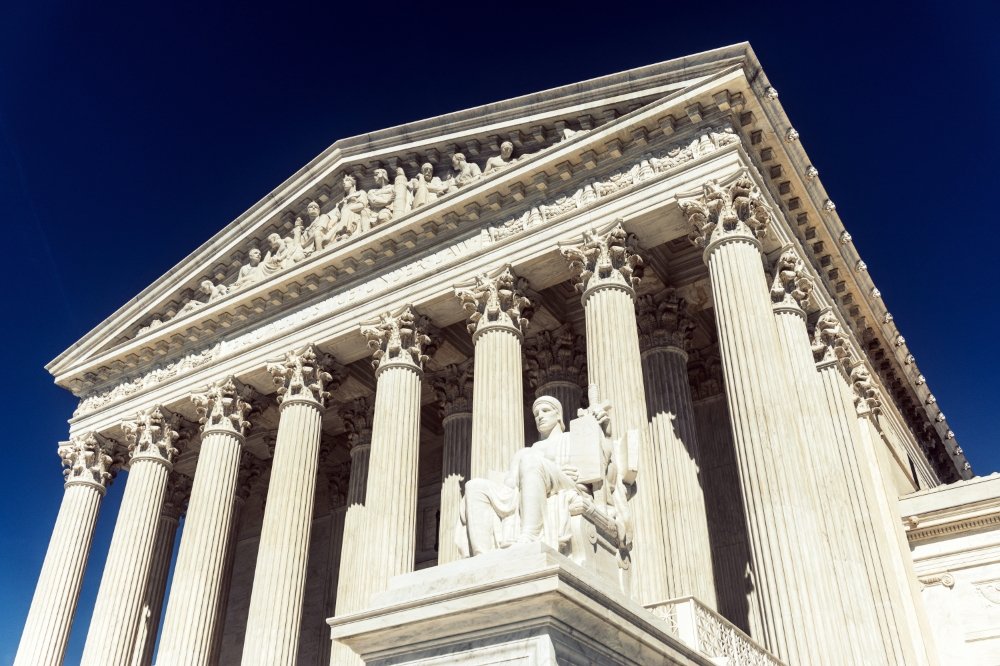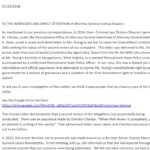The Warren Court holds a special place of derision within the conservative imagination. The term refers to the 1953-1969 timeframe when Chief Justice Earl Warren held sway over the U.S. Supreme Court. The right has understood this court as inaugurating and modeling the modern iteration of “judicial activism.”
Conservative critics of the Warren Court period hold that, through a series of heavy-handed interventions, it undermined essential elements of American government, including the rule of law, popular sovereignty, and federalism. The right’s evolution toward working-class populism should only increase antipathy toward the Warren Court and its rule by elitist judicial fiat.
This makes the case of Texas v. Pennsylvania all the more strange. Texas’s motion against Pennsylvania, Michigan, Wisconsin, and Georgia sought to enjoin certification of their presidential election results and essentially to require each one’s legislature to choose its slate of electors.
Notably, Texas did not act alone in its petitioning. The litigation became a kind of litmus test within the GOP, with supporting briefs from 17 state attorneys general, 126 members of the U.S. House of Representatives, and the president of the United States.
Yet even Earl Warren himself would have hesitated at so brazen a petition. If the Warren Court engaged in judicial activism, these petitioners asked the current Roberts Court to inaugurate judicial hyper-activism.
Resisting Judicial Hyper-Activism
Texas’s invitation to hyper-activism started with its request that SCOTUS hear the case. Numerous restrictions exist on when, why, and how courts adjudicate litigation. Here, the justices refused to take the case Texas’s “for lack of standing.”
Standing limits who can bring a claim to court. A litigant must assert a concrete, particular wrong done to himself, one directly traceable to the person he sues, and about which a court possesses the tools to address.
White House Press Secretary Kayleigh McEnany attacked the Supreme Court for rejecting Texas on these grounds, saying “they hid behind procedure.” President Trump made the same critique, tweeting that the justices “chickened out” in saying they could not hear the case. The court did no such thing.
For starters, calling standing merely procedural misses an enormous component of judicial overreach. Many who speak of judicial activism think only of what the court decides regarding contested issues like school prayer, abortion, and marriage.
But another side to such activism exists, one regarding whether and when the court takes cases at all. Judges should not decide every point of contention in our social and political life. Nor should the Supreme Court take on all exercise of judicial power, thereby circumventing state and other federal judges.
The doctrines attached to standing seek to restrain judges against these tendencies. The judicial power engages in legal interpretation only to resolve disputes — cases and controversies. Standing helps ensure real disputes exist by requiring litigants to show both their own injury and how the person they sue did the injuring. Judges must do so on matters of law that courts hold the capacity to determine well. Standing guards this area, too, setting aside “political questions” better left to the elected branches.
Instead of punting, the Supreme Court resisted Texas’s temptation to greatly erode these restraints. Texas started with a kernel of truth, namely the Article II requirement that “Each State shall appoint, in such Manner as the Legislature thereof may direct” their allotted electors. While this clause could elicit a valid suit by some persons in some circumstances, this one was not it.
The Threat to Federalism
Texas’s claim to injury by the sued states proved exceptionally weak. In how they conducted their elections, these states allegedly injured Texas as a state regarding who would serve as vice president and thus break the Senate’s tied votes. It moreover hurt its residents by “diluting” or “debasing” their votes by potentially inaccurate results.
But these claims did not come close to fulfilling requirements for standing. Both were too vague as well as too general for Texas to claim particular and concrete injury. Any state could do so. Voters, too, could do so themselves if Texas was correct, undermining further the standing claim.
The implication should be clear. If states could sue on these grounds, then they could sue on any grounds. If so, then the Supreme Court could find grounds to take nearly any suit. Doing so would massively expand its reach, not only over citizens and the political branches but over other courts as well. It could build ever-easier routes to judicial legislating under the guise of legal interpretation.
The temptation on standing greased the wheels for another form of hyper-activism: undermining federalism. Federalism divides delegations of the people’s power between national and state governments. This allocation makes the exercise of governmental power both safer and more effective.
It makes power safer by denying to any entity all governing authority; and thus, provides both states and national the capacity to check each other. Federalism creates more effective government power by properly dividing tasks; states address local concerns to which they are most fitted, and the federal government takes on issues of national scope.
The right attacks the courts, especially the Warren one, for subverting federalism by imposing its will on the states. Therein, the local becomes national as the popular becomes judicial.
On this point, Texas’s motion spoke fluent Warrenism. Ironically, this undermining of federalism would occur with states’s help. Under Texas’s motion, states could sue each other for any perceived shortcomings in the conduct of other states’s elections. Therefore, in asking to de-certify, Texas petitioned the court to exercise an unprecedented level of supervision over the states. This supervision could only bring dictated uniformity.
In going directly to the Supreme Court, moreover, Texas sought circumvention of state courts regarding the interpretation of state laws. The court would grab power from its judges, too. SCOTUS already acts too much as a body of legislators. They need not add election supervisors to the resume.
Finally, this judicial hyper-activism asks the Supreme Court to undercut popular will. When the court voids a law the right thinks constitutional, conservatives rail against “unelected judges” ruling over and against the people’s representatives. These efforts were a core sin of the Warren period. Here, Texas asked the court to go a step farther, negating the certified action of the people themselves.
Affirming ‘We, the People’
When asked for similar relief in other 2020 lawsuits, courts have noted just how extraordinary this request is. To un-certify state results and throw the choice back on state legislatures has no parallel in a past presidential election. To request doing so by judicial act only heightens its astonishing quality.
Judicial action so unprecedented, if ever legitimate, must stem from proof equally so. We need smoking guns of magnitude and certitude that would follow an artillery barrage. No such proof has emerged. We cannot rule out all voter fraud. Yet the expansive claims regarding electronic voting systems or reporting errors have been dispelled. Many smaller assertions regarding Sharpies or dead persons voting have not played out as accused, either.
Perhaps most telling, however, is that when actually in court instead of at a press conference or in a tweet, lawyers for the president have generally refused to claim fraud. This refusal includes the recent Wisconsin case that got past standing to the actual merits, although still did not yield a result in the president’s favor. Judges overturning the official, certified results on such evidence would not affirm rule by “We, the People.” Instead, it would pave the ground for judicial oligarchy.
In rejecting Texas’s petition, the Supreme Court wisely refused these temptations. It thereby denied taking yet another step toward a judiciary capable of reaching all, conforming all, ruling all. We certainly must assess our election system in the aftermath of 2020. We must be open to reform where needed. But, after Texas v. Pennsylvania, conservatives need to rediscover their justified antagonism towards judicial overreach. A Warren Court of the right is no answer.






